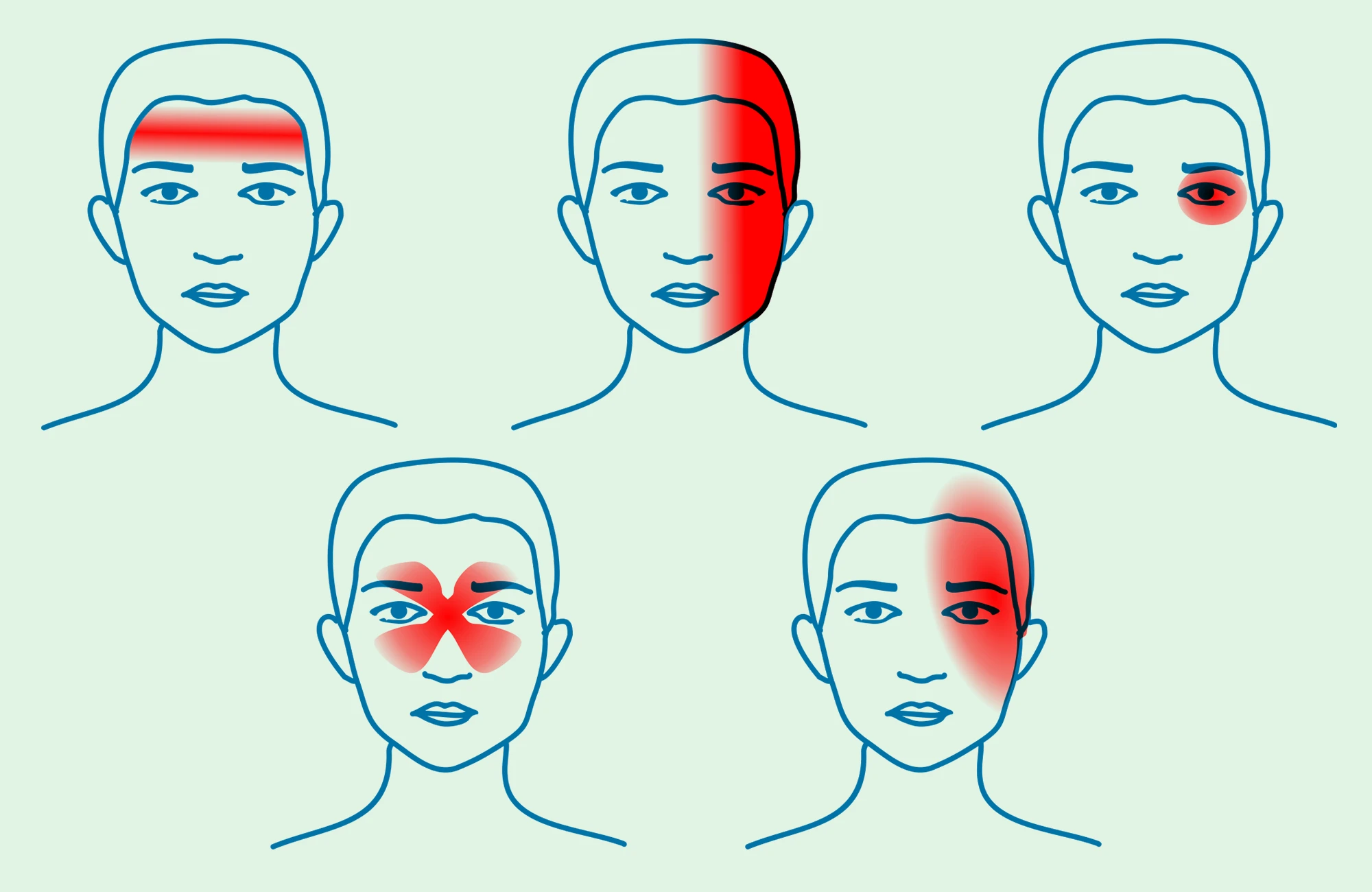To provide services at the highest level, we use cookies. Using the website requires you to choose settings related to their storage on your device. If you want to know what each type of cookie is used for, click the Details button below.
How does a headache map work?15 maja 2024 |

A headache map is a graphic diagnostic tool that depicts different areas of the head and the locations where patients may experience pain. It is used to identify the type of headache and its potential causes, making it easier for doctors to make an accurate diagnosis and select appropriate treatment.
The location of the headache can provide significant clues about its cause. Pain in the forehead and temples indicates a migraine or tension headache, similar to pain felt throughout the entire head. Pain in the neck and back of the head can result from sinus diseases, such as sinusitis.
Massage can be an effective way to relieve headaches, so it is worth using. Gentle circular massage of the temples can help reduce tension. Massaging the back of the neck and nape can relieve pain caused by muscle tension. Massaging the forehead, especially around the eyebrows, can help alleviate sinus pain. Massaging the base of the skull, where the head connects to the neck, can help reduce pain associated with the cervical spine.
A stress-related headache, often associated with stress or emotional tension, usually manifests as a tension headache. It is described as a feeling of pressure or a tight band around the head. This pain can be mild to moderate but is often chronic and persistent. It is often accompanied by feelings of fatigue, irritability, and difficulty concentrating.
Headache associated with cervical spine conditions, also known as cervicogenic headache, results from tension and dysfunction of the muscles and joints in the cervical spine. It can be triggered by prolonged sitting in one position, neck injuries, or spinal degeneration. This pain usually starts in the neck and can radiate to the back of the head, temples, and eyes. It is characterized by an increase in pain with neck movements or after prolonged muscle tension.